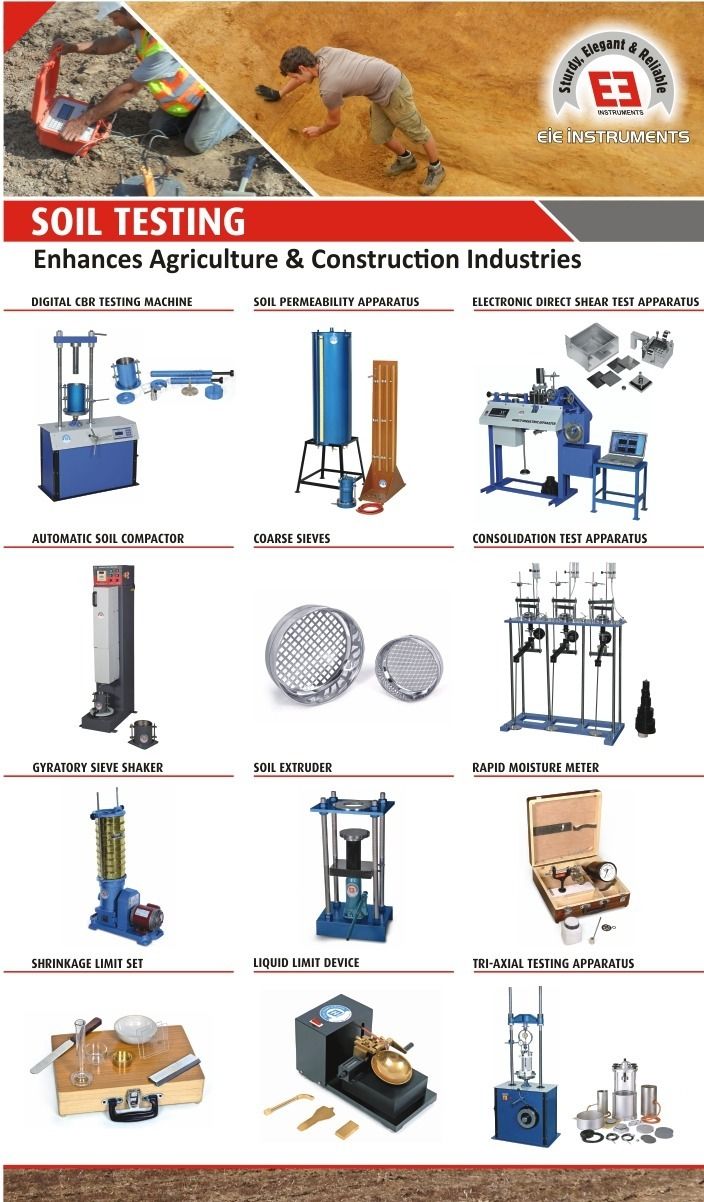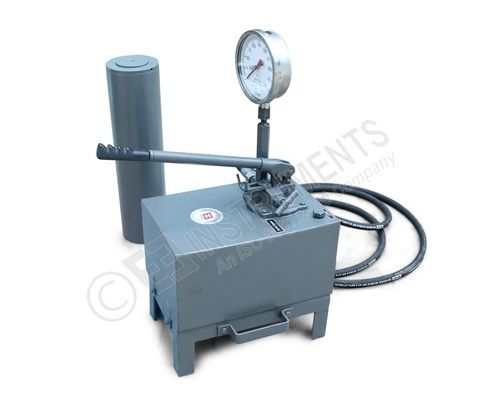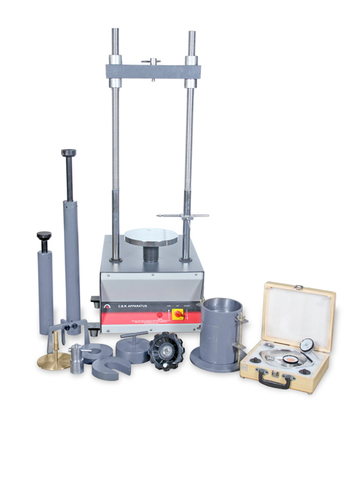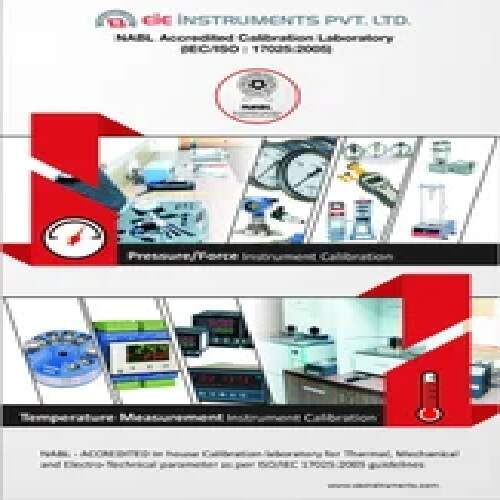Grain Size Analysis Apparatus Pipette Method
Price 1.00 INR/ Piece
Grain Size Analysis Apparatus Pipette Method Specification
- Application
- Soil Testing, Grain Size Determination
- Port Size
- Standard Laboratory Pipette
- Mounting Type
- Table Top
- Display Type
- No Digital Display (Manual Reading)
- Max Height
- 870 mm
- Features
- Easy Sample Handling, Durable Construction, Pipette Method
- Specimen Size
- 50 ml 1000 ml
- Test Range
- Fine to Coarse Soil Samples
- Number of Specimens
- Single Specimen/Batch
- Resolution
- 0.001 mm
- Hardness
- Corrosion-Resistant Materials
- Product Type
- Grain Size Analysis Apparatus Pipette Method
- Usage
- Soil Testing Equipment
- Temperature
- Ambient Lab Temperature (10C - 40C)
- Response Time
- Immediate upon Sampling
- Interface Type
- Manual Sampling
- Dimension (L*W*H)
- 430 X 220 X 870 (L X W X D) mm Millimeter (mm)
- Humidity
- Up to 80% RH
- Automation Grade
- Manual
- Measuring Range
- 0.002 mm to 2 mm grain size
- Equipment Type
- Grain Size Analysis Apparatus
- Accuracy
- 1%
- Capacity
- Multiple Pipette Sizes Available
- Machine Weight
- Approx. 16 kg
- Test Speed
- Manual Operation
- Test Width
- 210 mm
- Test Stroke
- 430 mm
- Control Mode
- Manual
Grain Size Analysis Apparatus Pipette Method Trade Information
- Minimum Order Quantity
- 1 Piece
- Supply Ability
- 100 Pieces Per Month
- Delivery Time
- 4 Week
- Sample Policy
- Contact us for information regarding our sample policy
- Packaging Details
- Wooden Box / Corrugated Box
- Certifications
- ISO 9001 : 2015
About Grain Size Analysis Apparatus Pipette Method
The Apparatus consists of a sliding panel which moves up and down by means of a screw allowing Anderson Pipette fixed to it to be raised or lowered vertically. A sedimentation tube is held by a laboratory clamp provided on the stand below the pipette. The depth of immersion is measured by a scale graduate in mm. at the side of the sliding panel. Supplied complete with Anderson Pipette 10ml. at the side capacity made from glass, and a sedimentation tube also of glass of 500ml capacity.
Additional accessories required to perform the test can be supplied at extra cost : Weighing Bottle, Electronic Balance of 0.001 gm sensitivity, Constant temp. bath, Stirring apparatus, Test sieves and Laboratory Oven.
Furtherdetails available on our website.
The Price mentioned here are subject to change as per the capacity,specifications and application of the user.
Robust and Durable Construction
Constructed with high-quality borosilicate glass and a powder-coated steel stand, the apparatus is designed for longevity and resistance to corrosion. Its durable construction makes it suitable for repeated laboratory use while maintaining consistent accuracy and safety. The blue and transparent components not only add visual clarity but also enhance monitoring during sample analysis.
Precision Manual Operation for Soil Analysis
The apparatus utilizes the proven pipette method for grain size analysis of soils, supporting both fine and coarse samples within a measuring range of 0.002 mm to 2 mm. Manual control allows users to achieve immediate, accurate readings without digital intervention, supporting both standard and custom laboratory protocols. Its calibration ensures compliance and reproducibility in every test.
Comprehensive Accessories and Service Support
Supplied with pipettes, measuring cylinders, and a robust stand, the system is factory calibrated and comes packed safely for export. On-site installation and reliable service support ensure seamless operation from the onset. Its compatibility with standard soil suspension procedures streamlines laboratory workflows for researchers and technicians alike.
FAQs of Grain Size Analysis Apparatus Pipette Method:
Q: How is the pipette method grain size analysis apparatus used in soil testing?
A: The apparatus is utilized by preparing soil samples using standard suspension procedures, after which measured volumes are withdrawn with the included pipettes. Manual readings are taken to determine particle sizes within the 0.002 mm to 2 mm range, providing accurate analysis for single specimens in each batch.Q: What are the materials of construction for this apparatus and why are they important?
A: The apparatus is made from borosilicate glass and powder-coated steel. These materials offer superior chemical resistance, durability, and ease of maintenance, ensuring the instrument remains robust even with regular exposure to soil suspensions and laboratory chemicals.Q: When should calibration be checked or adjusted for this device?
A: The apparatus is factory calibrated and typically does not require frequent recalibration under standard laboratory conditions. However, calibration can be verified periodically according to laboratory quality protocols or after extensive use to ensure measurement accuracy remains within 1%.Q: Where can this apparatus be installed and what are the space requirements?
A: Designed as a table-top instrument, the apparatus fits comfortably in most laboratory environments. Its dimensions (430 x 220 x 870 mm) allow it to occupy a compact footprint, and installation support is available on-site to ensure proper setup.Q: What is the process for preparing and analyzing soil samples with this apparatus?
A: Samples are prepared following standard soil suspension protocols. The soil suspension is placed in the measuring cylinders, and pipettes are used to extract specific volumes at set time intervals. Readings are manually recorded to determine the grain size distribution according to established standards (IS 2720 Part 4, ASTM D422).Q: How does manual operation benefit soil testing procedures?
A: Manual operation enables immediate response and full control over each stage of sampling and measurement. This method minimizes the risk of electronic error, increases the reliability of direct observation, and is particularly beneficial in settings without access to automated equipment.Q: What are the main advantages of choosing this grain size analysis apparatus?
A: Key benefits include its compatibility with a wide range of soil types, durable and corrosion-resistant construction, easy sample handling, accurate results, multiple accessories included, and compliance with international standards. The apparatus also offers on-site installation and maintenance support to ensure optimal performance.


Price:
- 50
- 100
- 200
- 250
- 500
- 1000+
More Products in Soil Testing Equipments Category
Liquid Limit Device
Price 1.00 INR / Piece
Minimum Order Quantity : 1 Piece
Usage : Soil Testing Equipment
Number of Specimens : Single specimen per test
Specimen Size : Approximately 100g soil sample
Features : Hand operated and motorised versions available; corrosionresistant brass cup; hard rubber base
Hydraulic Jack - 500 KN
Price 1.00 INR / Piece
Minimum Order Quantity : 1 Piece
Usage : Soil Testing Equipment
Number of Specimens : Single Specimen per test
Specimen Size : Varies as per testing requirement
Features : Portable, Heavy Duty, Hand Operated, Builtin Pressure Gauge
Laboratory Cbr Apparatus - Electric Operated
Price 1.00 INR / Piece
Minimum Order Quantity : 1 Piece
Usage : Soil Testing Equipment
Number of Specimens : Single specimen per test
Specimen Size : 150 mm diameter x 175 mm height
Features : Motorized, Digital display, Sturdy construction
Thermal Calibration and Validation Services
Price 1.00 INR / Piece
Minimum Order Quantity : 1 Piece
Usage : Freezer, incubator, oven, autoclave, warehouse validation
Number of Specimens : Up to 8 simultaneous channels
Specimen Size : Thermocouple/RTD sensors as required
Features : IQ/OQ/PQ documentation, traceability, multichannel, realtime monitoring, graph plotting
 |
EIE INSTRUMENTS PVT. LTD.
All Rights Reserved.(Terms of Use) Developed and Managed by Infocom Network Private Limited. |

 Send Inquiry
Send Inquiry




